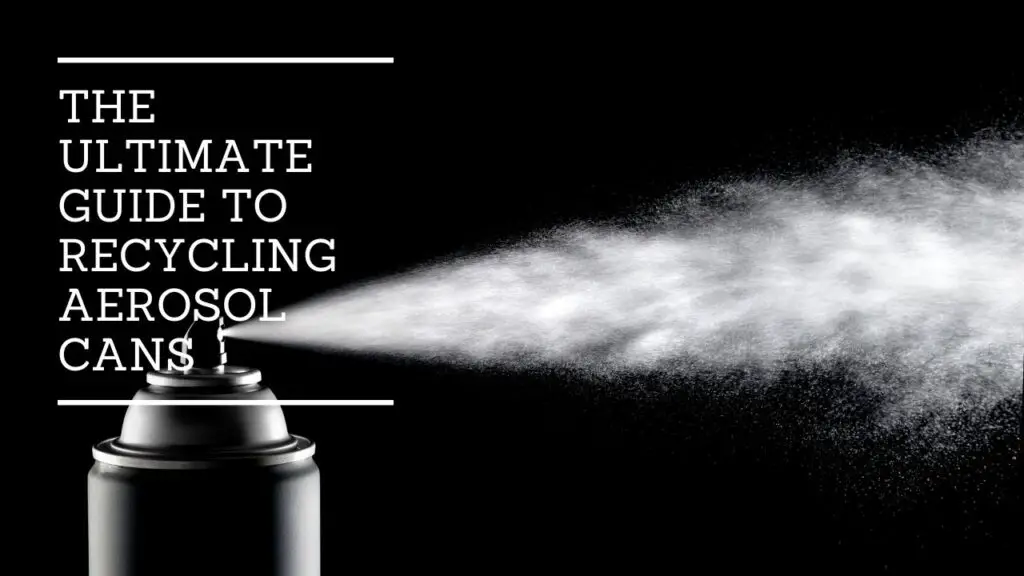Aerosol cans, also known as spray cans, dispense various products such as hairspray, cooking oil, and insect repellent. These cans are made of metal, usually aluminum or steel, and contain a pressurized gas that propels the product out of the can when activated by pressing down on the nozzle.
Recycling aerosol cans is a subject of debate due to the potential risks associated with the pressurized gas and the product inside the can. In the past, aerosol cans were not widely accepted for recycling due to concerns about the safety of the can and the potential for explosions or fires during the recycling process. However, in recent years, some recycling facilities have begun to accept aerosol cans for recycling as long as they are properly prepared.
In addition to the environmental benefits of recycling, recycling aerosol cans can also help to reduce the demand for raw materials and energy needed to produce new cans. Recycling one aluminum can save enough energy to power a television for three hours, so recycling many aerosol cans can significantly impact energy conservation.
Overall, it is possible to recycle aerosol cans as long as they are properly prepared and taken to a recycling facility that accepts them. Following proper safety procedures when handling and preparing aerosol cans for recycling is essential to avoid accidents or injuries.
How to Prepare Aerosol Cans for Recycling
To prepare an aerosol can for recycling, follow these steps:
- Use the product inside the can or release the contents safely and in a controlled manner. This can be done by spraying the product until it is completely used up or by puncturing the can with a nail or screw and releasing the contents in a well-ventilated area.
- Rinse out the can to remove any remaining residue. You can do this by spraying water inside the can and shaking it well or by filling the can with water and shaking it before emptying it.
- Remove the nozzle from the can. This can usually be done by pressing down on the nozzle and turning it counterclockwise.
- Make sure the can is empty and dry before recycling it.

It is essential to follow these steps carefully to ensure the safety of yourself and others when preparing aerosol cans for recycling. Do not attempt to recycle an aerosol can that is still pressurized or contains any product. If you are unsure how to prepare an aerosol can for recycling safely, you can contact your local recycling facility or waste management company for guidance.
How Many Aerosol Cans Are Produced in the US Annually?
It is estimated that over 2 billion aerosol cans are produced in the US annually.
What Happens to Aerosol Cans in the Landfill
Aerosol cans disposed of in a landfill will not decompose or break down over time like organic materials such as food waste or paper. Instead, they will remain in the landfill indefinitely, taking up space and potentially causing environmental problems.
One concern with aerosol cans in a landfill is the potential for the pressurized gas inside the can to escape and contribute to air pollution. In addition, the chemicals and substances contained in the product inside the can may leach into the soil and potentially contaminate groundwater.
In a landfill, aerosol cans may also pose a risk of explosion or fire if punctured or crushed. This can be a danger to landfill workers and could potentially ignite other waste materials.
It is best to recycle aerosol cans rather than dispose of them in a landfill. Recycling these cans can help to conserve natural resources, reduce energy consumption, and prevent potential environmental problems. If you cannot recycle an aerosol can, it is essential to properly dispose of it by following the guidelines provided by your local waste management company.
What Are Aerosol Cans Typically Made Of?
Aerosol cans are typically made of aluminum or steel, with a plastic or cardboard outer coating. The interior of the can contains a pressurized gas, such as propane or nitrogen, which helps to dispense the product contained within the can.
How Aerosol Cans Are Recycled
Aerosol cans are recycled similarly to other metal products, such as aluminum cans or steel food containers. The process typically involves the following steps:
- Collection: Aerosol cans are collected at recycling facilities or through curbside recycling programs.
- Sorting: The cans are sorted by type of metal, either aluminum or steel, and any other contaminants are removed.
- Shredding: The cans are shredded into small pieces to make separating the metal from other materials more accessible.
- Separation: A magnetic field separates the steel from the aluminum, removing any remaining contaminants.
- Melting: The metal pieces are melted in a furnace to create small ingots.
- Refining: The nuggets are further refined to remove impurities and create a high-quality metal.
- Manufacturing: Recycled metal is used to manufacture new products such as aluminum cans or steel.
This process helps conserve natural resources, reduce energy consumption, and prevent environmental problems by disposing of aerosol cans in landfills. Recycling aerosol cans also helps to reduce the demand for raw materials and energy needed to produce new cans.
Conclusion
Aerosol cans are made of metal and contain pressurized gas and a product dispensed when the nozzle is activated. These cans can be recycled, but they must be properly prepared, emptied, and cleaned before they can be recycled.
The recycling process involves collecting the cans, sorting them by type of metal, shredding them, separating the metal from other materials, melting it down, refining it, and using it for manufacturing new products. Recycling aerosol cans has several benefits, including conserving natural resources, reducing energy consumption, and preventing environmental problems caused by disposing of them in a landfill.
Following proper safety procedures when preparing aerosol cans for recycling is essential to avoid accidents or injuries.

